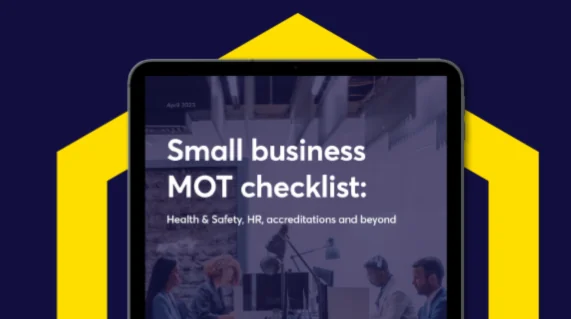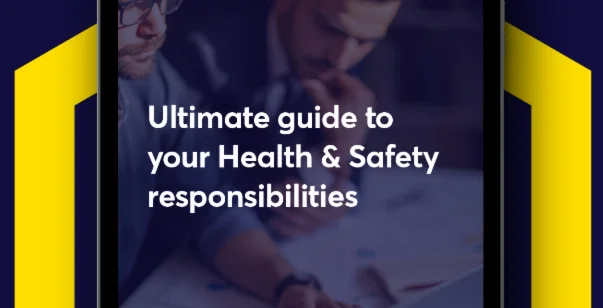Working in Cold Conditions Risk Assessment
Advice to employers
The Chartered Institute of Personnel and Development (CIPD) have said employers must be flexible during harsh weather conditions, such as snow and ice, and should not force staff to “risk life and limb” getting to work. When such weather conditions have occurred this can result in schools across the country closing, leaving many parents with child care problems. In such severe weather conditions trains can be cancelled and motorists are often warned only to make essential journey. In such circumstances many staff may be unable to get to work or opt to work from home. Whilst many people may not be able to travel to their workplaces; business does not have to stop entirely in such circumstances. With good business continuity and safety policies in place, together with a good communication system business can continue to operate.
Employers have many things to consider including safety within the workplace, minimum temperatures (see Do Not Forget box), arrangements if the workplace needs to close, business continuity, the safety of employees (plus the general public and contractors) and ensuring good communication. These aspects are featured in more detail below. It may be necessary to make quick decisions about closing the workplace or sending people home. These should be made considering risks and hazards, likelihood and severity ensuring safety as far as is reasonably practicable. Directors may wish to make decisions in conjunction with your health and safety advisers, employee representatives and facilities manager.
Advice to those with responsibility for health and safety
At times of extreme and dangerous weather it is essential that communication is retained throughout the workforce. Staff must be instructed as to what employer’s policy is, how to follow it and who to communicate with if they have any queries.
risk assessment – it must be made clear who takes the final decision in times of bad weather, in terms of when people should leave the workplace or if a workplace should close down entirely for a specified period. The five stages of risk assessment should be applied, as always, and a decision made by a competent person.
safety in the workplace – with fewer people in the workplace, lone working situations may arise and it should be ensured that communication is maintained with any employees in this situation and that non- essential high risk tasks are avoided. Consideration should also be given to vulnerable workers such as pregnant and disabled employees.
emergency arrangements – due to low staffing levels consideration needs to be given to arrangements for dealing with emergencies such as failures of safety critical systems, persons trapped in lifts, first aid incidents, fire evacuations, power failures, workplace temperatures falling below the minimum guidelines etc (See the ‘Key considerations’ box).
working from home – home working might be seen as a solution but employers should be aware that it is also their responsibility to ensure their employees’ health and safety if they are working from home. Home working risk assessments should be undertaken to ensure employees are able to comfortably and safely work from home. It is often best to undertake these on the potential working environment as part of contingency planning before bad weather strikes.
driving for work – it should be ensured drivers are allowed extra time to complete journeys and factor in alternative routes and that they are not pressurised to complete any journeys made dangerously difficult by the weather. Company vehicles should be provided with suitable equipment for the conditions eg. winter tyres. See http://www. rospa.com/road-safety/resources/free/employers/ for further guidance.
Slips, trips and falls – walking to and from car parks or between buildings at work during this weather requires special attention to avoid slipping and falling. Slips and falls are some of the most frequent types of injuries during the winter months. Employees should be reminded to avoid boots or shoes with smooth soles and heels, such as plastic and leather soles and instead, wear a pair of well insulated boots with good rubber treads and to walk slowly and with shorter steps when on icy surfaces. Main pathways and steps should be cleared as far as possible of snow and ice to allow safe access to the buildings. Employees should be reminded to remove as much snow and water from their boots as they can when entering buildings as water from melting ice on the floor can also lead to slippery conditions.
updates – any news specific to the organisation should be sent out by email and published on any intranet sites.
employees trapped at work – employers should keep an eye on the weather throughout the day, taking care that employees don’t get trapped at work and put at risk if snow starts to fall. Communication lines need to be in place to ensure a work place can be closed down relatively quickly if necessary. It is also worth having in place contingency plans should employees be trapped at work or unable to travel home
contractors – it is important to consider contractors, freelancers and part time staff. Make sure you have a list of ways to contact all people who usually work within your workplace.
members of the public – ensure that suitable and sufficient signage is displayed to inform the public of important information.
PPE – if outdoor working is required, ensure that suitable and sufficient PPE is provided, including suitable gloves. Systems of work for outdoor activities should take account of reasonably foreseeable poor weather.
Key considerations
- communication is paramount. Make sure everyone is kept informed of changes
- contractors, freelancers and part-time workers may also need contacting
- it is important to consider inside temperature and comfort for staff. Workplaces should not drop below 16 degrees Celsius (13 degrees Celsius where work requires severe physical effort). The Chartered Institution of Building Services Engineers (CIBSE) suggests a range from 20°C to 24oC for offices involving sedentary tasks.
- snow and ice are hazards that may result in slips, trips and falls. Advise staff of the correct footwear, use signage where possible and ensure that icy surfaces are gritted accordingly
- driving to and from the workplace can be dangerous in times of extreme weather
Further information
- The TUC has also advised companies to ensure they have a bad weather policy, which sets out what is expected of staff and what they should do when snow, ice and a lack of transport prevents them from getting to work. A model policy is available, which can be tailored-made to your companies needs.
- Information on weather conditions is available from the Met Office or local radio broadcasts.
- Public transport service updates and information on disruptions due to the snow and ice conditions are available on rail and bus operator’s websites. Traffic updates and important travel information can be found at: www.theaa.com
- Information on workplace temperatures is available: hse.gov.uk





